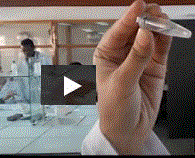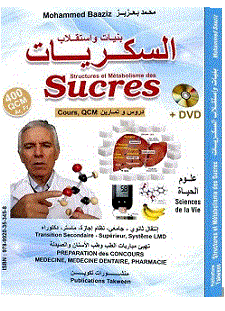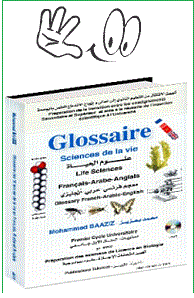Plant active defenses against pathogens
الدفاعات المستحثة ضد الممرضات


When plants are attacked by pathogens, they defend themselves with passive and active defense mechanisms.
Active defenses (الدفاعات المستحثة)= induced defense including hypersensitive responses.
تنتمي دفاعات النبات ضد الممرضات إلى نوعين، منهاالدفاعات التركيبية والخاملة الموجودة سلفًا والدفاعات المستحثة تنتج بعد الإصابة بالعدوى. تعد المناعة البيوكيميائية، ميزة يُفرز من خلالها النبات موادا كيميائية للحد من الأضرار الناجمة عن مسبِّبات الأمراض. |



Elicitation gives rise to:
- Reinforcement of cell walls, lignification and callose deposition.
- Production of antimicrobial metabolites such as phytoalexins.
- Production of reactive oxygen species (ROS) and reactive nitrogen species (RNS).

Mobilization of secondary metabolism
- Role of phenolics in the resistance mechanisms of plants against fungal pathogens
- Phytoalexins
Avtivated phenolic synthesis induces resistance:
The
speed with which phenolics are synthesized determines the disease resistance
Oxidized phenolics induce resistance:
Phenolics are oxidized to quinones by the
host enzymes such as polyphenoloxidase
and peroxidase. Quinones are well-known
fungitoxic substances in plants and oxidized phenolics have beeb reported to be responsible for disease resistance.
When catechin was incubated with healty plant extracts, high amounts of oxidized phenolics were obtained. NaCNis an inhibitor of peroxidase and polyphenoloxidase. When NaCN was added to the catechin and plant extract mixture, low amounts of oxidized phenolics were obtained and this mixture was not inhibitory to PG enzyme activity of the pathogen. When the NaCN was omitted, high amounts of oxidized phenolics were obtained causing high inhibition of the fungal PG.

Phytoalexins
- Phytoalexins are different from anticipins!. Anticipins are low molecular weight antimicrobial compounds present in plants before challenge by micro-organisms or are produced after infection solely, from pre-existing precursors.
- Phytoalexins derived from the phenylpropanoid pathway or terpene biosynthetic pathway.
- Phytoalexins accumulate rapidly around the site of infection by incompatible pathogen.
- Phytoalexins are frequently reported in dicotyledons but rarely in monocotyledons and gymnosperms.
Phytoalexins are low molecular mass secondary metabolites with antimicrobial activity that accumulate in plants as a result of infection or stress.
Elicitors cause phytoalexin synthesis. Phytoalexins need to be rapidly accumulated during
the early stage of the infection process at the infection sites and in sufficient quantity in order to be considered a resistance factor.
- Phytoalexins are synthesized in response to:
-- Pathogen attack.
-- Exogenous elicitors such as 1/ cell wall constituents and metabolic products of invading microbes (potent phytoalexin elicitors) and 2/ Glucans, chitin, chitosan, glycoproteins, unsaturated fatty acids, organic acids
-- Endogenous elicitors (plant origin) such as Oligogalacturonides (derived from pectin degradation)

Examples of phytoalexins.
- Isoflavonoid:
common phytoalexins in the legume family.
- Sesquiterpenes: phytoalexins of potato, tobacco, and tomato (Solanaceae).
- Pisatin: the first phytoalexin isolated from pea inoculated with Monilinia fructicola by Perrin and Bottomley (1962).
- Phaseollin: phytoalexin isolated
from bean inoculated with F. solani f.sp. pisi by
Perrin (1964).
- Rishitin: phytoalexin isolated from
tuber of “Rishiri” potato following inoculation of an
incompatible race of Phytophthora infestan by Tomiyama et
al. (1968).
- Phytoalexins show antimicrobial activity (against fungi and bacteria) causing disruption
of membrane integrity and function or/and inhibition
of electron transport system. For example, Rishitin
(from potato) lyzes chloroplasts, interacts with phospholipids
in membrane and causes an increase in membrane fluidity.
- For some cases, phytoalexins could be detoxified by fungal
enzymes. For example, Nectria haematococca (anamorph
= F. solani) who causes stem and root rots of pea,
is known to detoxify pisatin by demethylating this phytoalexin to less toxic 6 alpha-hydrozymaackiain. This detoxification
is catalyzed by a pisatin demethylase
that has been identified in Nectria haematococca as a cytochrome P450 enzyme.






- Enzymes lytiques: chitinase, glucanase. Faire la transgénèse avec les gènes de ses enzymes. Des gènes codant pour ses protéines et provenant de plantes (haricot, orge, luzerne) ont été introduits chez le tabac. Néanmoins, les résistances obtenues par cette voie sont partielles.
Pathogenesis-Related (PR) Proteins
PR proteins accumulate locally in the infected and surrounding tissues, and also in remote uninfected tissues. Production of PR proteins in the uninfected parts of plants can prevent the affected plants from further infection. PR protein in the plants was first discovered and reported in tobacco plants infected by tobacco mosaic virus.

Later, these proteins were found in many plants. Most PR proteins in the plant species are acid-soluble, low molecular weight, and protease-resistant proteins. PR proteins depending on their isoelectric points may be
acidic or basic proteins but they have similar functions.
Most acidic PR proteins are located in the intercellular spaces,
whereas, basic PR proteins are predominantly located in the vacuole.
Currently PR-proteins were categorized into 17 families according to their properties and functions, including ß-1,3-glucanases, chitinases, thaumatin-like proteins, peroxidases,
ribosome-inactivating proteins,
defenses, thionins, nonspecific lipid transfer proteins, oxalate oxidase,
and oxalate-oxidase-like proteins.
Among these PR proteins chitinases
and ß-1,3-glucanases are
two important hydrolytic enzymes that are abundant in many plant
species after infection by different type of pathogens. The amount
of them significantly increase and play main role of defense reaction
against fungal pathogen by degrading cell wall, because chitin and
ß-1,3-glucan is also a major structural component of the cell
walls of many pathogenic fungi. ß-1,3-glucanases
appear to be coordinately expressed along with chitinases after
fungal infection. This co-induction of the two
hydrolytic enzymes has been described in many plant species, including
pea, bean, tomato, tobacco, maize, soybean, potato, and wheat.

Chitinase induction
The fungal cell wall contains a cell membrane , which have a protective layer of chitin.
Abiotic agentssuch as chitosan, ethylene, ozone, wounding, polysaccharides, salicylic acid, salt solution, and UV light can induce higher expression of chitinases in plants.
Biotic agents
such as bacteria, insects, fungi, viruses, and fungal cell wall fragments can also induce the expression of chitinases in plants.
Studies of chitinases from bean, cucumber, pea, potato, sugar beet,
tomato, and tobacco have shown that the expression of chitinases is induced dramatically after infections.

The fungal cell wall contains a cell membrane with different proteins, a protective layer of chitin as well as glucan (mostly beta) and mannoproteins on its surface. Different fungal cell walls contain different glucans. The cell wall of Aspergillus fumigatus has beta-1,3- and beta-1,4-glucan and alpha-1,3-glucan. Candida albicans contains beta-1,3- and beta-1,6-glucan.
Induction usually occurs strongly at the point of infection and drops rapidly as the distance from the infection site increases.
The induction of chitinase can spread to adjacent tissues, resulting in a systemic acquired resistance that may enable the plant to protect itself from secondary infection.
Plant peroxidases and their involvement in resistance against fungi

Links:




ENSEIGNEMENT DE MASTER
- - Cours du Master Biotechnologies et Amélioration des Plantes, Marrakech
- Travaux pratiques Master Biotechnologies et Amélioration des Plantes, Marrakech